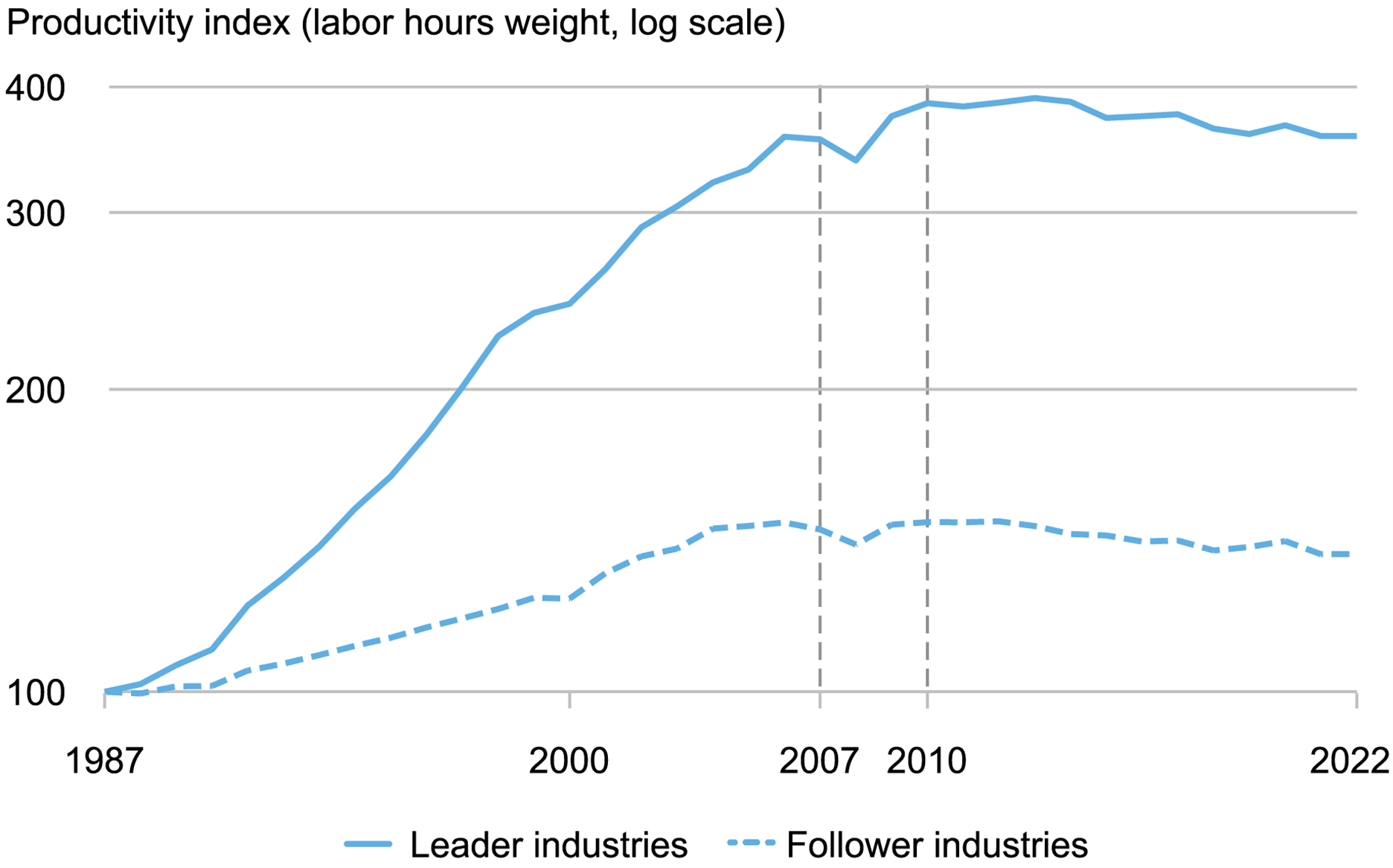BLOG

How Can Companies Be More Productive?
The holy grail for companies is achieving maximum productivity growth at the most profitable revenue ratio. For publicly traded companies, investors wait to hear each quarter the changes in the company’s top-line revenue (gross sales) and bottom-line EBITDA (earnings before interest, depreciation, taxes, and amortization). The challenge for companies is increasing top-line revenue efficiently so their net income increases with rising sales.
Typically, for companies to increase top-line sales they need to make capital investments in areas that include marketing, staffing, infrastructure, mergers and acquisitions, technology, and buildings. Making substantial changes in a company’s sales requires substantial capital investments that may improve both top and bottom-line revenue months, quarters or even years after the capital expenditures. As a result, management and investors get nervous in situations when company expenses are rising while net income is declining.
In addition to capital expenditure to increase top and bottom-line revenue, senior executives also monitor their productivity index. This is the net output of products or services per employee hour. One method a business can efficiently increase their employee’s productivity is by focusing on process or morale.
Unfortunately, employee productivity has stagnated for the past 12 years. Last week the Bureau of Labor Statistics released a report titled, "The Mysterious Slowdown in U.S. Manufacturing Productivity” by Danial Lashkari and Jeremy Pearce.
In this report, they review the past 37 years of employee productivity. From 1987 to 2006, the productivity index nearly doubled. However, going into the Great Recession productivity declined over the next two years. After 2008, the productivity index resumed its annual increases reaching new highs in 2010. However, since 2010, the productivity index has peaked and slowly declined through 2022.

One can assume that the dramatic climb in productivity during the past three decades is due to the introduction of new technology as employees learn to be more productive with these tools to complete their tasks more efficiently. The impact of technology has been significant these past several decades, improving company efficiency and profitability for nearly all firms from manufacturing and attorneys. As an example, it was typical for large law firms to dedicate a floor to their private law library and some with in-house librarians. Attorneys would spend hours reviewing books and journals in the library researching case law in preparation for their client’s trial. Now thanks to databases and the internet, almost no law firms have libraries as attorneys have access to nearly all case and court files on CDs or via the internet on their laptops or smartphones.
However, it appears technological advancements of the past several decades have reached maximum impact and now with diminishing returns. This may be why many companies prohibit the use of personal cell phones during business hours and monitor employee emails on company computers to ensure their focus is on company matters. The education system is also experiencing diminishing returns on their investment in technology providing laptops to all students who now appear more distracted with internet options than the class subjects.
More concerning is the productivity decline is occurring in nearly all industries. In Messrs. Lashkari and Pearce's report, they provided the chart below indicating that both the fastest-growing companies (leaders) have peaked in productivity along with the slower-growing companies (followers).

This is a surprise to analysts as companies continue to invest in new technologies with minimal benefit.
That is until recently.
The introduction of artificial intelligence and 3D printing is opening new opportunities to incorporate tasks formally completed by humans that can now be accomplished by “thinking” computers. Tasks from phone answering systems, retail customer services, and robotics are changing companies’ processes and interactions with their customers. Even the medical industry is experimenting with 3D printing of organic matter and the use of AI to guide doctors during surgery.
Of course, with every advancement, there are unintended consequences. Cybercrime and access and creation of inappropriate materials are causing new and different threats to society while companies wrestle with the application of this new technology.
Messrs. Lashkari and Pearce admitted they do not have an answer to the stagnation of productivity. However, their report may be revised in a few years after monitoring how companies implement new disruptive technology. The question is whether productivity can resume an upward trajectory of growth similar to the 1980’s and 1990’s or continue to decline due to unintended consequences.
What Does This Mean to Me?
Corporate America continues to grow and hire new employees. However, some industries are embracing new technologies quicker than others. Now we are greeted by a computer screen and kiosk at McDonalds to take our order. Almost every large retailer's customer service is managed by computer software and utilizing AI voice imaging in an attempt to provide a “better customer experience”.
The result of the changing business landscape is still yet to be determined based on their customers’ reactions. If the result is dissatisfaction and declining sales, then companies will need to rethink the application of the technology.
For Up Capital Management, we still believe in “Old School” tactics of answering your phone call and visiting with you in person to discuss your finances and investment accounts. AI is also being implemented as large-scale investment companies are assigning customer services to technology and reducing their investment advisor staff. Unintended consequences of AI software managing portfolios may include triggering short-term volatility similar to the Dow Jones Industrial Average plunging 1,000 points on May 5, 2022, and August 26, 2022, or nearly 700 points in the first five minutes of trading on October 10, 2008. Our view is computers may get you to the moon but assisting you to financial freedom is still best done by trained professionals.
Let us know your thoughts on this Update. We welcome the opportunity to assist you and your family in achieving your financial goals.
CONTACT
Check the background of your financial professional on FINRA's BrokerCheck.
The content is developed from sources believed to be providing accurate information. The information in this material is not intended as tax or legal advice. Please consult legal or tax professionals for specific information regarding your individual situation. The opinions expressed and material provided are for general information, and should not be considered a solicitation for the purchase or sale of any security.
We take protecting your data and privacy very seriously. As of January 1, 2020 the California Consumer Privacy Act (CCPA) suggests the following link as an extra measure to safeguard your data: Do not sell my personal information.
The information on this website is the opinion of Up Capital Management and does not constitute investment advice or an offer to invest or to provide management services. Before purchasing any investment, a prospective investor should consult with its own investment, accounting, legal, and tax advisers to evaluate independently the risks, consequences, and suitability of any investment.
Copyright 2024 | Privacy Policy | Terms & Conditions

